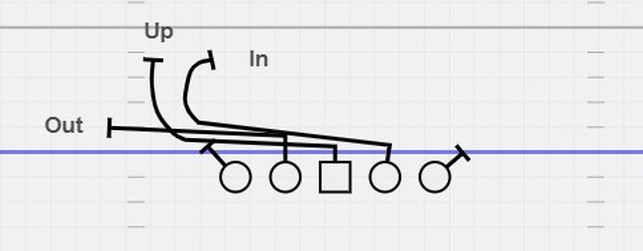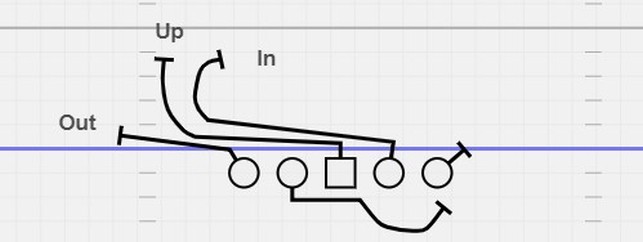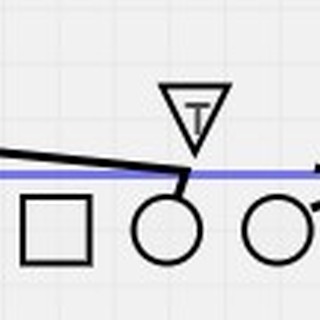By Rich Alercio
Head Football Coach/Athletic Director
St. Johnsbury High School (VT)
Twitter: @OlSkills
Screen Pass Options (SPOs) provide your quarterback with a frontside pass option opposite the side of your screen. Like RPOs, SPOs identify the conflict player. The strongside inside linebacker (Sam) is the most difficult defender to account for in screen blocking. We identify him as the conflict player. If he hangs in the box to play screen, we throw the frontside pass. If he expands to the frontside pass, he is no longer a threat to the screen.
Unlike RPOs, SPOs allow the QB up to 2 seconds to make a Post-Snap read. Moreover, there are no concerns of a QB/RB exchange, no changes to the blocking scheme, concerns of an illegal man downfield or blitzes with man coverage.
Although RPOs are all the rage in offensive football at every level, we have been running SPOs long before the term conflict player was ever used. In 2001, while I was the offensive coordinator at The College of New Jersey, we were faced with a 3rd & 6 at Midfield. We called Trips Right Boot Screen Left with every intention of the quarterback booting to the right and throwing a screen pass to the back on the left. For some reason, he threw to the Tight End on the frontside who got 9 yards and a first down. After the series, I asked our quarterback, “Why did you throw the ball to the Tight End”. He replied, “He was wide open.” That was a V-8 moment. From that point on, we always gave our quarterback a frontside pass option before throwing any screen.
On our drop-back SPO we run Stick, a pass we already have in our offense and a route combination most teams use for their RPOs. We run it out of 3x1 Open and Tight. We run our Boot SPOs out of 2x2 and 3x1 with a Tight End on the front-side. All routes and protections are the same if we call Stick or the Stick SPO and Boot or the Boot SPO. The only tag we will make is to have the screen-side WR Crack, if we do not want him to run the route associated with the pass or if we feel we need him to make a block at the point of attack.
OL Protection:
Our SPOs are 2-Count 3-Man Screens. In both our drop-back and boot screens, the offensive line will block the protection called for a 2-count. We block slide protection on drop-back and man protection with a pulling guard on boot. After the 2-count, 3 offensive linemen will depart down the line of scrimmage to the end of the box then go out, up and in. In drop--back, it is the Guard, Center & Guard (see diagram 1). Since the screen side guard is pulling to the boot-side on our boot protection, the 3 linemen going to the screen are the tackle, center, and guard (see diagram 2). The other two linemen maintain their block.
Diagram 1:

Diagram 2:

It is imperative that the offensive linemen departing to the screen do not cross a defensive lineman’s face on the way out. If blocking a front-side technique (See Diagram 3), that is not a concern. The coaching point is to keep hips and shoulders square to the line of scrimmage and not turn them to the defender which would delay the departure. It is a concern when blocking back to a backside technique (See Diagram 4). The offensive lineman must allow the defender to rush outside of him and then depart behind him. In this scenario, the offensive lineman can open his hips to the defender which will facilitate a quicker departure to the screen. When the offensive lineman approaches the defender in space, we have them buzz their feet before contact, just as we teach defenders to breakdown in open-field tackling drills, to avoid them whiffing on the more athletic player in space.
Diagram 3:









